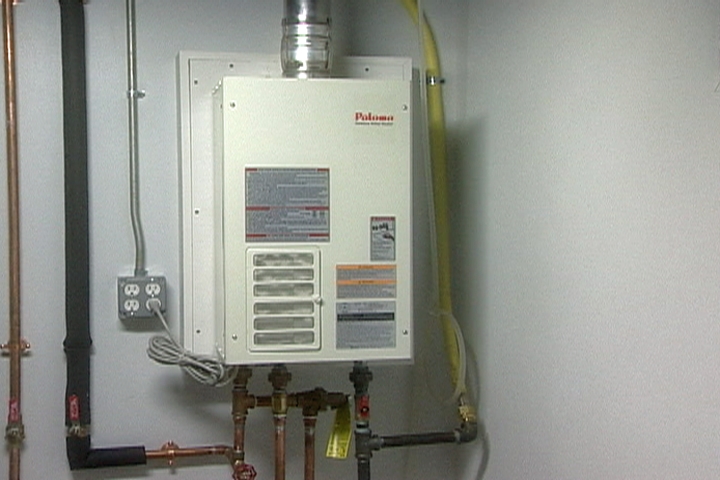Top Methods to Care for Your Home's Hot Water System Successfully
Top Methods to Care for Your Home's Hot Water System Successfully
Blog Article
What are your thoughts about How to Maintain a Hot Water Heater in a Few Simple Steps?

Warm water is crucial for day-to-day convenience, whether it's for a refreshing shower or cleaning meals. To guarantee your warm water system runs effectively and lasts longer, normal upkeep is essential. This post offers practical pointers and insights on how to keep your home's hot water system to stay clear of interruptions and costly fixings.
Introduction
Maintaining your home's warm water system may seem overwhelming, however with a few straightforward steps, you can ensure it runs smoothly for several years to come. This overview covers everything from recognizing your warm water system to DIY maintenance tips and knowing when to call in specialist assistance.
Relevance of Preserving Your Warm Water System
Routine maintenance not just expands the life expectancy of your hot water system yet likewise ensures it runs successfully. Overlooking maintenance can bring about reduced efficiency, greater power bills, and also premature failure of the system.
Indicators Your Hot Water System Needs Upkeep
Knowing when your warm water system needs attention can protect against significant problems. Look out for indicators such as inconsistent water temperature level, odd noises from the heating system, or rustic water.
Recognizing Your Hot Water System
Prior to diving into upkeep tasks, it's handy to comprehend the basic components of your warm water system. Normally, this includes the water heater itself, pipelines, anode rods, and temperature controls.
Month-to-month Maintenance Tasks
Regular month-to-month checks can help capture minor issues prior to they intensify.
Flushing the Hot Water Heater
Flushing your hot water heater eliminates sediment build-up, enhancing efficiency and lengthening its life.
Checking and Changing Anode Rods
Anode poles prevent deterioration inside the storage tank. Inspecting and replacing them when broken is vital.
Inspecting and Readjusting Temperature Setups
Adjusting the temperature level settings makes sure optimum performance and safety and security.
DIY Tips for Upkeep
You can do numerous maintenance jobs yourself to maintain your hot water system in top problem.
Checking for Leakages
Routinely evaluate pipes and links for leaks, as these can cause water damage and greater costs.
Evaluating Stress Relief Valves
Evaluating the stress relief valve ensures it operates correctly and stops too much pressure accumulation.
Protecting Pipelines
Insulating warm water pipelines decreases warmth loss and can save energy.
When to Call a Specialist
While do it yourself upkeep is beneficial, some issues need specialist proficiency.
Complicated Problems Needing Specialist Assistance
Instances consist of major leaks, electric troubles, or if your water heater is regularly underperforming.
Routine Expert Upkeep Conveniences
Expert upkeep can consist of complete examinations, tune-ups, and making sure conformity with security criteria.
Final thought
Routine upkeep of your home's warm water system is necessary for performance, durability, and expense financial savings. By complying with these ideas and understanding when to seek professional help, you can make certain a reliable supply of warm water without unanticipated disturbances.
How to Maintain an Instant Hot Water Heater
Before tinkering with your hot water heater, make sure that it’s not powered on. You also have to turn off the main circuit breaker and shut off the main gas line to prevent accidents. Also turn off the water valves connected to your unit to prevent water from flowing into and out of the appliance. 2. When you’re done, you have to detach the purge valves’ caps. These look like the letter “T†and are situated on either side of the water valves. Doing so will release any pressure that has accumulated inside the valves while at the same time avoid hot water from shooting out and burning your skin. 3. When the purge valves’ caps are removed, you have to connect your hosing lines to the valves. Your unit should have come with three hoses but if it didn’t, you can purchase these things from any hardware or home repair shops. You can also get them from retail stores that sell water heating systems. Read the user’s manual and follow it to complete this task properly. When the hosing lines are connected, open the purge port’s valves. 4. You should never use harsh chemical cleaners or solutions when cleaning your unit. Make use of white vinegar instead. It should be undiluted and you’ll probably use about 2 gallons. 5. Now flush your water heater. This task should probably take about 40 minutes. We can’t give you specific directions for this because the procedure is carried out depending on the type, model and brand of your heater. With that being said, refer to the user’s manual. 6. When you’re done draining the unit, you have to turn off the purge port valves again. Remove the hosing lines that you earlier installed on each of the water valves. Put the valve caps (purge port) back in their respective places and be very careful so as not to damage the rubber discs that are found inside these caps. 7. Now that everything’s back in place, check your user’s manual again to find out how to reactivate your water heating system. 8. Once it is working, turn one of your hot water faucets on just to let air pass through the heater’s water supply pipes. Leave the tap on until water flows smoothly out of it. https://www.orrplumbing.com/blog/2014/september/how-to-maintain-an-instant-hot-water-heater/

Do you really like reading up on What Kind of Maintenance Do Water Heaters Need?? Post a short review directly below. We will be pleased to know your thoughts about this article. Hoping to see you back again in the future. Sharing is nice. You won't know, you may just be helping someone out. Thanks for being here. Kindly check up our blog back soon.
Details Report this page